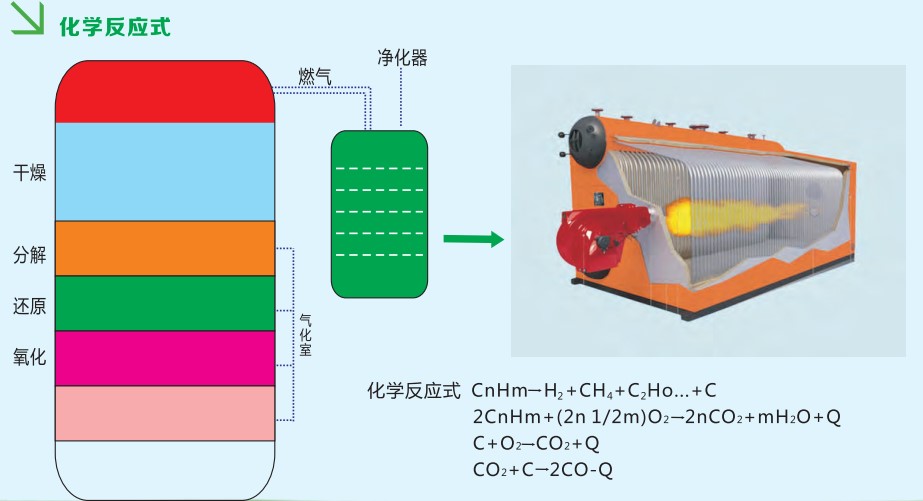Gasification principle
Biomass gasification is under certain thermal conditions, with the help of gasification medium (air, oxygen or water vapor, etc.) to make the biomass polymer pyrolysis, oxidation, reduction, reforming reactions, pyrolysis accompanied by the progress of the tar pyrolysis or catalytic into small molecules of hydrocarbons, to obtain the CO, H2, CH4 and other combustible gases.
chemical equation

Biomass Gasification Cost Advantages
| 项目 | 天然气 | 生物质颗粒 | 生物质气化 | 煤 |
| 燃气热值 | 8600Kcal/Nm3 | 4100Kcal/Kg | 1300Kcal/Nm3 | 5500Kcal/Kg |
| CO(mg/m3) | 137 | 92 | 80 | |
| NOx | 248 | 220 | 190 | 500 |
| SO2 | 48 | 13 | 3 | 500 |
| 烟尘 | 16 | 80 | 26 | |
| 燃料价格 | 3.5元/Nm3 | 800元/吨 | 450元/吨 | 750元/吨 |
| 蒸汽成本 | 310元/吨 | 210元/吨 | 190元/吨 | 170元/吨 |

Biomass fuel advantages
1、Environmentally friendly and clean gas fuel, with good combustion characteristics and high burnout rate; 2、Extremely low sulfur content, only about 1/20 of fuel oil.
2、Extremely low sulfur content, only about 1/20 of fuel oil, without taking any desulfurization measures to meet environmental requirements.
3, the nitrogen content is very low, combustion without taking any denitrification measures to meet environmental requirements, the gas contains a very low amount of soot.
4, emissions: biomass combustion emissions of CO2 and its CO2 absorbed in the growth process is the same, Dan replaced the fossil energy, reducing the net emissions, according to the mechanism, biomass fuels CO2 for the ecological "zero" emissions.



